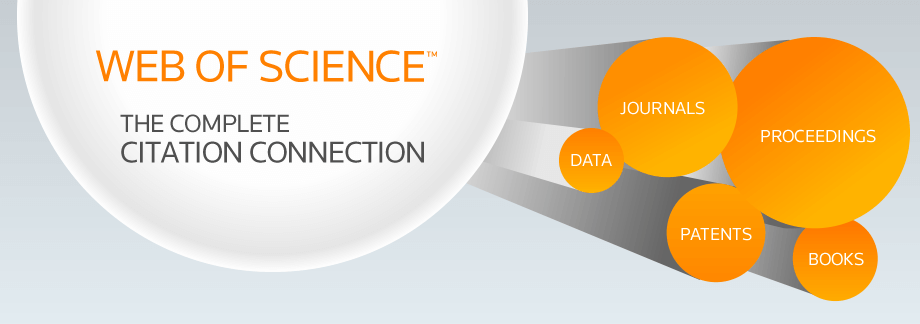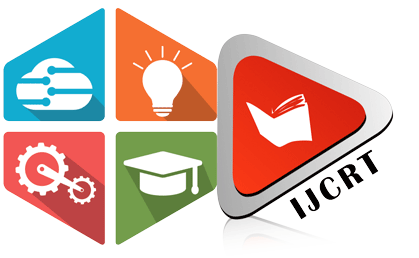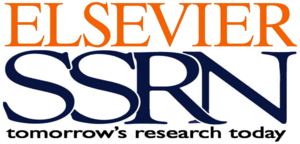INTERNATIONAL JOURNAL OF CREATIVE RESEARCH THOUGHTS - IJCRT (IJCRT.ORG)
International Peer Reviewed & Refereed Journals, Open Access Journal
IJCRT Peer-Reviewed (Refereed) Journal as Per New UGC Rules.
ISSN Approved Journal No: 2320-2882 | Impact factor: 7.97 | ESTD Year: 2013
Call For Paper - Volume 13 | Issue 11 | Month- November 2025
Scholarly open access journals, Peer-reviewed, and Refereed Journals, Impact factor 7.97 (Calculate by google scholar and Semantic Scholar | AI-Powered Research Tool) , Multidisciplinary, Monthly, Indexing in all major database & Metadata, Citation Generator, Digital Object Identifier(CrossRef DOI)
Contact Us Click Here
WhatsApp Contact Click Here
Volume 13 | Issue 9 | September-2025
| IJCRT Journal front page | IJCRT Journal Back Page |
Paper Title: Quantum-Resistant Cryptography: Uniting Lattice-Based Encryption and Code-Based Error Correction for Enhanced Security
Author Name(s): S.Nithiyanandam, J.Prince Raj
Published Paper ID: - IJCRTBG02020
Register Paper ID - 294055
Publisher Journal Name: IJPUBLICATION, IJCRT
DOI Member ID: 10.6084/m9.doi.one.IJCRTBG02020 and DOI :
Author Country : Indian Author, India, - , -, - , | Research Area: Science and Technology Published Paper URL: http://ijcrt.org/viewfull.php?&p_id=IJCRTBG02020 Published Paper PDF: download.php?file=IJCRTBG02020 Published Paper PDF: http://www.ijcrt.org/papers/IJCRTBG02020.pdf
Your Paper Publication Details:
Title: QUANTUM-RESISTANT CRYPTOGRAPHY: UNITING LATTICE-BASED ENCRYPTION AND CODE-BASED ERROR CORRECTION FOR ENHANCED SECURITY
DOI (Digital Object Identifier) :
Pubished in Volume: 13 | Issue: 9 | Year: September 2025
Publisher Name : IJCRT | www.ijcrt.org | ISSN : 2320-2882
Subject Area: Science and Technology
Author type: Indian Author
Pubished in Volume: 13
Issue: 9
Pages: 169-181
Year: September 2025
Downloads: 67
E-ISSN Number: 2320-2882
Abstract
As quantum computing advances, traditional cryptographic methods face significant threats from quantum algorithms, necessitating the development of quantum-resistant encryption systems. This paper explores a modified cryptographic algorithm combining lattice-based encryption techniques with enhanced noise, larger key sizes, and increased modulus values to resist quantum attacks. Utilizing Google's Cirq quantum simulator, the robustness of the algorithm against quantum period-finding techniques is evaluated, showing minimal or no detectable periodicity. These findings underscore the effectiveness of the proposed method for quantum resistance. This framework is especially applicable to IoT and cloud environments, offering long-term data protection and resilience in noisy communication channels.
Licence: creative commons attribution 4.0
License
Keywords
Quantum-Resistant Cryptography: Uniting Lattice-Based Encryption and Code-Based Error Correction for Enhanced Security
License
Paper Title: The Blockchain Paradox: Navigating the Twin Forces of Innovation and Threats
Author Name(s): S.Shamili, G.Nalinipriya
Published Paper ID: - IJCRTBG02019
Register Paper ID - 294056
Publisher Journal Name: IJPUBLICATION, IJCRT
DOI Member ID: 10.6084/m9.doi.one.IJCRTBG02019 and DOI :
Author Country : Indian Author, India, - , -, - , | Research Area: Science and Technology Published Paper URL: http://ijcrt.org/viewfull.php?&p_id=IJCRTBG02019 Published Paper PDF: download.php?file=IJCRTBG02019 Published Paper PDF: http://www.ijcrt.org/papers/IJCRTBG02019.pdf
Your Paper Publication Details:
Title: THE BLOCKCHAIN PARADOX: NAVIGATING THE TWIN FORCES OF INNOVATION AND THREATS
DOI (Digital Object Identifier) :
Pubished in Volume: 13 | Issue: 9 | Year: September 2025
Publisher Name : IJCRT | www.ijcrt.org | ISSN : 2320-2882
Subject Area: Science and Technology
Author type: Indian Author
Pubished in Volume: 13
Issue: 9
Pages: 164-168
Year: September 2025
Downloads: 66
E-ISSN Number: 2320-2882
Abstract
Blockchain technology has revolutionized digital security by enabling decentralized, tamper-resistant, and transparent data management. However, with its increasing adoption, blockchain faces a growing number of security threats, including smart contract vulnerabilities, 51% attacks, Sybil attacks, cross-chain interoperability risks, and the potential impact of quantum computing. Ensuring robust security in blockchain systems is crucial for applications such as things like decentralized finance (DeFi), tracking goods in the supply chain, and verifying digital identities.This survey provides a systematic review of blockchain security threats and mitigation strategies. We categorize vulnerabilities based on blockchain layers-- network, consensus, and application--and analyze emerging defense mechanisms. Advanced solutions such as artificial intelligence (AI)-driven anomaly detection, automated smart contract verification, Zero-Knowledge Proofs (ZKPs) for privacy preservation, and quantum-resistant cryptographic techniques are explored. Additionally, we discuss blockchain forensic artificial intelligence (AI)-driven anomaly detection, automated smart contract verification, Zero-Knowledge Proofs (ZKPs) for privacy preservation, and quantum- resistant cryptographic techniques. Additionally, blockchain forensic techniques are being developed to detect fraudulent activities and illicit transactions. This survey provides a comprehensive review of block-chain security threats and mitigation strategies. We categorize vulnerabilities based on blockchain layers--network, consensus, and application-- and analyze emerging defense mechanisms. By consolidating recent advancements and identifying open research challenges, this paper aims to guide future research in developing secure and resilient blockchain architectures. II. SECURTY THREATS IN BLOCKCHAIN techniques for detecting fraud and illicit transactions.By A. Network Layer Attacks consolidating recent advancements and identifying open research challenges, this paper serves as a roadmap for future research in blockchain security. Our analysis highlights the need for adaptive, AI-enhanced security frameworks and novel cryptographic approaches to address evolving threats. This survey aims to assist researchers and industry professionals in developing secure and resilient blockchain architectures for the next decade and application layers. Additionally, we explore AI- driven security mechanisms and cryptographic advancements to enhance blockchain security.
Licence: creative commons attribution 4.0
License
Keywords
Blockchain security ,Smart contract vulnerabilities ,Quantum-resistant cryptography,AI-driven security.
License
Paper Title: Signspeak Speech To Sign Language Convertor
Author Name(s): Joshua Sheron D, Rishab S, Siddhartha P, Uma P
Published Paper ID: - IJCRTBG02018
Register Paper ID - 294057
Publisher Journal Name: IJPUBLICATION, IJCRT
DOI Member ID: 10.6084/m9.doi.one.IJCRTBG02018 and DOI :
Author Country : Indian Author, India, - , -, - , | Research Area: Science and Technology Published Paper URL: http://ijcrt.org/viewfull.php?&p_id=IJCRTBG02018 Published Paper PDF: download.php?file=IJCRTBG02018 Published Paper PDF: http://www.ijcrt.org/papers/IJCRTBG02018.pdf
Your Paper Publication Details:
Title: SIGNSPEAK SPEECH TO SIGN LANGUAGE CONVERTOR
DOI (Digital Object Identifier) :
Pubished in Volume: 13 | Issue: 9 | Year: September 2025
Publisher Name : IJCRT | www.ijcrt.org | ISSN : 2320-2882
Subject Area: Science and Technology
Author type: Indian Author
Pubished in Volume: 13
Issue: 9
Pages: 158-163
Year: September 2025
Downloads: 63
E-ISSN Number: 2320-2882
Abstract
This project aims to develop an advanced communication system called SignSpeak, designed to bridge the gap between spoken language and sign language, thereby promoting greater inclusivity for individuals with hearing and speech impairments in public interactions and official functions. In many real-world scenarios, the absence of sign language interpreters poses a significant communication barrier, often excluding hearing- impaired individuals from accessing essential information. The existing solutions involve stitching together video clips, based on the input text. These solutions are not scalable and moreover the actions rigid and lacks real time feedback loop. SignSpeak addresses this challenge by leveraging Automatic Speech Recognition and Natural Language Processing to capture and semantically interpret real-time speech input. The processed text is then translated into sign language using a Sign Language Generation model, which is rendered through an expressive virtual avatar capable of conveying sign language gestures accurately and naturally. By automating the entire speech-to-sign language conversion pipeline, the system eliminates the dependency on human interpreters, ensuring scalability, cost-effectiveness, and consistent accuracy across diverse environments such as government offices, hospitals, educational institutions, and public events. Ultimately, SignSpeak offers a robust, real-time, and scalable solution that enhances communication accessibility, promotes digital inclusivity, and empowers the hearing-impaired community by enabling equal participation in society through improved access to spoken information.
Licence: creative commons attribution 4.0
License
Keywords
Indian Sign Language, Speech to Sign Language, ISL, Avatar-based Sign Language, Text to Sign Language, Speech Recognition, Digital Accessibility, Hearing Impairment Support, Human Computer Interaction
License
Paper Title: Secure and Scalable Reverse Proxy with Load Balancer for Dynamic Network Management
Author Name(s): Poorani S, Siva Prakash S, Sredesh V, Yogesh S U
Published Paper ID: - IJCRTBG02017
Register Paper ID - 294058
Publisher Journal Name: IJPUBLICATION, IJCRT
DOI Member ID: 10.6084/m9.doi.one.IJCRTBG02017 and DOI :
Author Country : Indian Author, India, - , -, - , | Research Area: Science and Technology Published Paper URL: http://ijcrt.org/viewfull.php?&p_id=IJCRTBG02017 Published Paper PDF: download.php?file=IJCRTBG02017 Published Paper PDF: http://www.ijcrt.org/papers/IJCRTBG02017.pdf
Your Paper Publication Details:
Title: SECURE AND SCALABLE REVERSE PROXY WITH LOAD BALANCER FOR DYNAMIC NETWORK MANAGEMENT
DOI (Digital Object Identifier) :
Pubished in Volume: 13 | Issue: 9 | Year: September 2025
Publisher Name : IJCRT | www.ijcrt.org | ISSN : 2320-2882
Subject Area: Science and Technology
Author type: Indian Author
Pubished in Volume: 13
Issue: 9
Pages: 152-157
Year: September 2025
Downloads: 55
E-ISSN Number: 2320-2882
Abstract
In contemporary software frameworks, the ability to dynamically manage networks and ensure robust security is essential. This study introduces a secure and scalable reverse proxy server that incorporates sophisticated load balancing and extensive security measures to address these needs. The design features TLS/SSL termination, rate limiting, and a Web Application Firewall (WAF) to defend against threats like DDoS, SQL injection, and XSS. Additionally, it offers detailed logging for monitoring and troubleshooting. To enhance performance, the proxy utilizes HTTP caching and effective load balancing techniques, such as round-robin and weighted round-robin, to alleviate backend load and enhance response times. The archi- tecture is equipped with auto-scaling capabilities: internal load balancing among worker processes and external balancing across upstream servers ensure high availability and fault tolerance. For instance, health checks enable the proxy to identify failed servers and redirect traffic, maintaining service continuity during partial failures. The system was tested under various loads, showing that it efficiently distributes traffic and scales with demand while maintaining secure and resilient network operations.
Licence: creative commons attribution 4.0
License
Keywords
Secure and Scalable Reverse Proxy with Load Balancer for Dynamic Network Management
License
Paper Title: Streamline the Loan Journey with Smart Identity Checks
Author Name(s): Srinithi Ganesh J, Yogesh S, Saranbalaji J B, Dr. S. Senthamizh Selvi
Published Paper ID: - IJCRTBG02016
Register Paper ID - 294059
Publisher Journal Name: IJPUBLICATION, IJCRT
DOI Member ID: 10.6084/m9.doi.one.IJCRTBG02016 and DOI :
Author Country : Indian Author, India, - , -, - , | Research Area: Science and Technology Published Paper URL: http://ijcrt.org/viewfull.php?&p_id=IJCRTBG02016 Published Paper PDF: download.php?file=IJCRTBG02016 Published Paper PDF: http://www.ijcrt.org/papers/IJCRTBG02016.pdf
Your Paper Publication Details:
Title: STREAMLINE THE LOAN JOURNEY WITH SMART IDENTITY CHECKS
DOI (Digital Object Identifier) :
Pubished in Volume: 13 | Issue: 9 | Year: September 2025
Publisher Name : IJCRT | www.ijcrt.org | ISSN : 2320-2882
Subject Area: Science and Technology
Author type: Indian Author
Pubished in Volume: 13
Issue: 9
Pages: 141-151
Year: September 2025
Downloads: 65
E-ISSN Number: 2320-2882
Abstract
This project uses AI - powered ID checks to automate the loan waiver approval process for increased accuracy, security and efficiency. Key applicant's information such as the name, Aadhaar number, and PAN number is retrieved from the document image using optical character detection (OCR) and refined with specified named entity recognition (NER) in NLP. This data has been verified against applicant details from the database. By Residual-based facial recognition The model compares the applicant's live images with the ID document to ensure ID reliability. To ensure protection a multi factor authentication that is a unique password (OTP) is sent to email and SMS of the applicant to ensure genuine user. Economic justification is assessed by the usual engine, which uses bank documents to assess income, credits, criteria, loan history and land ownership. The system ensures regulatory compliance through encryption, reduces manual errors, and provides real-time analysis to administrators. The modular architecture can be easily integrated into state databases and banking systems and is optimized for low- resource environments with optical models. On the whole, the system offers a scalable, transparent, safe approach.
Licence: creative commons attribution 4.0
License
Keywords
Loan Waiver, Identity Verification, OCR, Facial Recognition, ResNet, NER, OTP Authentication
License
Paper Title: JURIS.AI: A Legal Assistant for Understanding the Consumer Protection Act, 2019
Author Name(s): Adithya Vikas A, Aparajitha P, Aravindhan S S, R. K. Kapilavani
Published Paper ID: - IJCRTBG02015
Register Paper ID - 294060
Publisher Journal Name: IJPUBLICATION, IJCRT
DOI Member ID: 10.6084/m9.doi.one.IJCRTBG02015 and DOI :
Author Country : Indian Author, India, - , -, - , | Research Area: Science and Technology Published Paper URL: http://ijcrt.org/viewfull.php?&p_id=IJCRTBG02015 Published Paper PDF: download.php?file=IJCRTBG02015 Published Paper PDF: http://www.ijcrt.org/papers/IJCRTBG02015.pdf
Your Paper Publication Details:
Title: JURIS.AI: A LEGAL ASSISTANT FOR UNDERSTANDING THE CONSUMER PROTECTION ACT, 2019
DOI (Digital Object Identifier) :
Pubished in Volume: 13 | Issue: 9 | Year: September 2025
Publisher Name : IJCRT | www.ijcrt.org | ISSN : 2320-2882
Subject Area: Science and Technology
Author type: Indian Author
Pubished in Volume: 13
Issue: 9
Pages: 129-140
Year: September 2025
Downloads: 68
E-ISSN Number: 2320-2882
Abstract
The democratization of legal knowledge is a vital step toward ensuring that individuals can make informed decisions about their rights and responsibilities. This project, JURIS.AI, aims to make legal knowledge--particularly Indian consumer protection rights--accessible to all, regardless of legal expertise. Leveraging Natural Language Processing (NLP) and Machine Learning (ML), the project personalizes responses, provides comprehensive legal information, and breaks down complex legal terminology. By incorporating Large Language Models (LLMs) for interactive Q&A, and using techniques like Parameter-Efficient Fine-Tuning (PEFT) and Retrieval-Augmented Generation (RAG), the system ensures accurate, context-sensitive answers. Key features include a robust legal knowledge base, text-to-speech and speech-to-text accessibility, and step-by-step legal guidance. Notably, the system's performance is measured using the ROUGE score, improving from 0.69 (QLoRA) to 0.84 (QLoRA + RAG). This tool empowers users with varying levels of legal literacy to navigate the legal landscape confidently, offering practical legal assistance without specialized training.
Licence: creative commons attribution 4.0
License
Keywords
Quantized Low Rank Adaptation (QLoRA), Retrieval-Augmented Generation (RAG), Parameter Efficient Fine Tuning (PEFT), Large Language Models (LLMs), ROUGE, Legal NLP, Consumer Protection Act.
License
Paper Title: Graph-Based Detection of Anomalous Health Insurance Claims Using Transformer-Augmented Embeddings
Author Name(s): Dhanrithii D, Dr Suresh Kumar M
Published Paper ID: - IJCRTBG02014
Register Paper ID - 294061
Publisher Journal Name: IJPUBLICATION, IJCRT
DOI Member ID: 10.6084/m9.doi.one.IJCRTBG02014 and DOI :
Author Country : Indian Author, India, - , -, - , | Research Area: Science and Technology Published Paper URL: http://ijcrt.org/viewfull.php?&p_id=IJCRTBG02014 Published Paper PDF: download.php?file=IJCRTBG02014 Published Paper PDF: http://www.ijcrt.org/papers/IJCRTBG02014.pdf
Your Paper Publication Details:
Title: GRAPH-BASED DETECTION OF ANOMALOUS HEALTH INSURANCE CLAIMS USING TRANSFORMER-AUGMENTED EMBEDDINGS
DOI (Digital Object Identifier) :
Pubished in Volume: 13 | Issue: 9 | Year: September 2025
Publisher Name : IJCRT | www.ijcrt.org | ISSN : 2320-2882
Subject Area: Science and Technology
Author type: Indian Author
Pubished in Volume: 13
Issue: 9
Pages: 119-128
Year: September 2025
Downloads: 56
E-ISSN Number: 2320-2882
Abstract
Health insurance fraud results in significant financial losses and necessitates scalable, intelligent detection methods. This work presents a modular and unsupervised framework for fraud detection in healthcare claims by integrating semantic feature extraction, heterogeneous graph modeling, and anomaly detection. Structured claim metadata and unstructured clinical narratives are embedded using transformer-based models to capture rich contextual information. These embeddings are incorporated into a heterogeneous graph that connects patients, providers, and claims, enabling the use of graph neural networks to learn complex relational patterns indicative of fraudulent behavior. A graph-based representation is constructed using synthetic yet realistic healthcare data generated in standard clinical formats. Contextual node embeddings are learned, and clustering methods are applied to identify latent behavioral patterns. Unsupervised anomaly detection techniques, including tree-based and distance-based models, are employed to flag suspicious entities. A provider-level risk scoring mechanism is introduced to prioritize investigation efforts. This framework is designed to operate without reliance on labeled data, ensuring adaptability to evolving fraud strategies and generalizability across diverse claim scenarios. Experimental evaluation shows the system's effectiveness in uncovering subtle fraud signatures, highlighting its potential as a robust alternative to traditional rule-based approaches.
Licence: creative commons attribution 4.0
License
Keywords
healthcare fraud detection, graph neural networks, transformer models, anomaly detection, semantic embeddings
License
Paper Title: MULTILINGUAL HERITAGE ASSISTANT USING A RECURRENT LOCATION-AWARE TRANSFORMER APPROACH
Author Name(s): Ramalingam T, Gousiga V S, Harish K, Bharat Kumar R J
Published Paper ID: - IJCRTBG02013
Register Paper ID - 294063
Publisher Journal Name: IJPUBLICATION, IJCRT
DOI Member ID: 10.6084/m9.doi.one.IJCRTBG02013 and DOI :
Author Country : Indian Author, India, - , -, - , | Research Area: Science and Technology Published Paper URL: http://ijcrt.org/viewfull.php?&p_id=IJCRTBG02013 Published Paper PDF: download.php?file=IJCRTBG02013 Published Paper PDF: http://www.ijcrt.org/papers/IJCRTBG02013.pdf
Your Paper Publication Details:
Title: MULTILINGUAL HERITAGE ASSISTANT USING A RECURRENT LOCATION-AWARE TRANSFORMER APPROACH
DOI (Digital Object Identifier) :
Pubished in Volume: 13 | Issue: 9 | Year: September 2025
Publisher Name : IJCRT | www.ijcrt.org | ISSN : 2320-2882
Subject Area: Science and Technology
Author type: Indian Author
Pubished in Volume: 13
Issue: 9
Pages: 112-118
Year: September 2025
Downloads: 54
E-ISSN Number: 2320-2882
Abstract
In the rapidly evolving landscape of cultural tourism, offering real-time, multilingual, and personalized insights plays a pivotal role in enhancing the visitor experience, especially at historically rich and diverse locations such as those found across Tamil Nadu. This project presents an AI-powered voice assistant mobile application specifically designed to make heritage exploration more engaging, educational, and accessible for a wide range of users, including domestic and international tourists. The system integrates advanced natural language processing and machine learning technologies to interpret user queries in multiple Indian languages, whether spoken or typed, and respond with contextually relevant heritage information. At its core, the application employs a fine-tuned Mistral 7B transformer model to generate dynamic, human-like responses across various languages, while OpenAI's Whisper model ensures high-accuracy speech-to-text conversion for real-time voice interaction. Complementing this, the Google Text-to- Speech (gTTS) engine synthesizes natural-sounding audio responses, making the interface fully voice-driven and inclusive. Personalization is achieved through a GRU-based behavioral model that tracks and analyzes sequential user interactions, learning individual preferences to deliver tailored content and recommendations. The application incorporates real-time geolocation data and applies the Haversine distance formula to determine the user's proximity to various heritage sites, thereby offering hyperlocal suggestions and site-specific content. All user preferences, historical interactions, and metadata are efficiently managed using an SQLite database, ensuring smooth offline support and optimized performance in resource-constrained environments. Drawing from a structured heritage dataset in JSON format, the assistant provides rich narratives, historical facts, travel guidance, and site-specific tips, creating an immersive cultural experience.
Licence: creative commons attribution 4.0
License
Keywords
In the rapidly evolving landscape of cultural tourism, offering real-time, multilingual, and personalized insights plays a pivotal role in enhancing the visitor experience, especially at historically rich and diverse locations such as those found across Tamil Nadu. This project presents an AI-powered voice assistant mobile application specifically designed to make heritage exploration more engaging, educational, and accessible for a wide range of users, including domestic and international touri
License
Paper Title: From Noise to Insight: A Dual-Stage Deep Learning Approach for SAR Image Denoising and Colourisa- tion
Author Name(s): Arunima Muralitharan, Kartheesan Senthilkumar, Muralidharan S
Published Paper ID: - IJCRTBG02012
Register Paper ID - 294064
Publisher Journal Name: IJPUBLICATION, IJCRT
DOI Member ID: 10.6084/m9.doi.one.IJCRTBG02012 and DOI :
Author Country : Indian Author, India, - , -, - , | Research Area: Science and Technology Published Paper URL: http://ijcrt.org/viewfull.php?&p_id=IJCRTBG02012 Published Paper PDF: download.php?file=IJCRTBG02012 Published Paper PDF: http://www.ijcrt.org/papers/IJCRTBG02012.pdf
Your Paper Publication Details:
Title: FROM NOISE TO INSIGHT: A DUAL-STAGE DEEP LEARNING APPROACH FOR SAR IMAGE DENOISING AND COLOURISA- TION
DOI (Digital Object Identifier) :
Pubished in Volume: 13 | Issue: 9 | Year: September 2025
Publisher Name : IJCRT | www.ijcrt.org | ISSN : 2320-2882
Subject Area: Science and Technology
Author type: Indian Author
Pubished in Volume: 13
Issue: 9
Pages: 105-111
Year: September 2025
Downloads: 61
E-ISSN Number: 2320-2882
Abstract
Licence: creative commons attribution 4.0
License
Keywords
Synthetic Aperture Radar (SAR), Speckle Reduc- tion, Image Colourisation, Deep Learning
License
Paper Title: iLab: A Smart Campus Lab Automation System Using Cloud
Author Name(s): Akhilesha G, Shyamalan V, Saai Harshaal N K, Anitha R
Published Paper ID: - IJCRTBG02011
Register Paper ID - 294065
Publisher Journal Name: IJPUBLICATION, IJCRT
DOI Member ID: 10.6084/m9.doi.one.IJCRTBG02011 and DOI :
Author Country : Indian Author, India, - , -, - , | Research Area: Science and Technology Published Paper URL: http://ijcrt.org/viewfull.php?&p_id=IJCRTBG02011 Published Paper PDF: download.php?file=IJCRTBG02011 Published Paper PDF: http://www.ijcrt.org/papers/IJCRTBG02011.pdf
Your Paper Publication Details:
Title: ILAB: A SMART CAMPUS LAB AUTOMATION SYSTEM USING CLOUD
DOI (Digital Object Identifier) :
Pubished in Volume: 13 | Issue: 9 | Year: September 2025
Publisher Name : IJCRT | www.ijcrt.org | ISSN : 2320-2882
Subject Area: Science and Technology
Author type: Indian Author
Pubished in Volume: 13
Issue: 9
Pages: 101-104
Year: September 2025
Downloads: 69
E-ISSN Number: 2320-2882
Abstract
This paper presents iLab, a unified smart lab automation system for educational campuses that integrates multiple control modalities to optimize energy use. Key features include NFC-tag authentication for secure access to lighting, AI- driven occupancy monitoring via OpenCV computer vision to regulate HVAC based on real- time room usage, and an intuitive gesture-control interface for manual override of lights and air conditioning. All power usage and load data are continuously logged to a cloud analytics platform, enabling remote monitoring and data- driven optimization. Early evaluations suggest significant efficiency gains: preliminary tests indicate 30-40% reductions in lighting and HVAC energy consumption. By combining security (NFC access), computer vision, and cloud analytics, iLab offers a scalable, sustainable model for smart campus infrastructure. This multi-modal automation not only cuts operational costs but also advances campus sustainability goals through lower energy waste.
Licence: creative commons attribution 4.0
License
Keywords
NFC, Computer Vision, Cloud Analytics, Energy Efficiency, Gesture Control, Smart Campus.
License
November 2025
Volume 13 | Issue 11
Last Date :
30-Nov-2025
Submit Manuscript Online Impact Factor: 7.97 Review Results : Within 02-03 Days Paper Publication : Within 02-03 Days

ISSN: 2320-2882 Impact Factor: 7.97 and ISSN APPROVED Journal Starting Year (ESTD) : 2013

ISSN: 2320-2882 Impact Factor: 7.97 and ISSN APPROVED Journal Starting Year (ESTD) : 2013

CONFERENCE PROPOSAL CONFERENCE PROCEEDINGS







































































